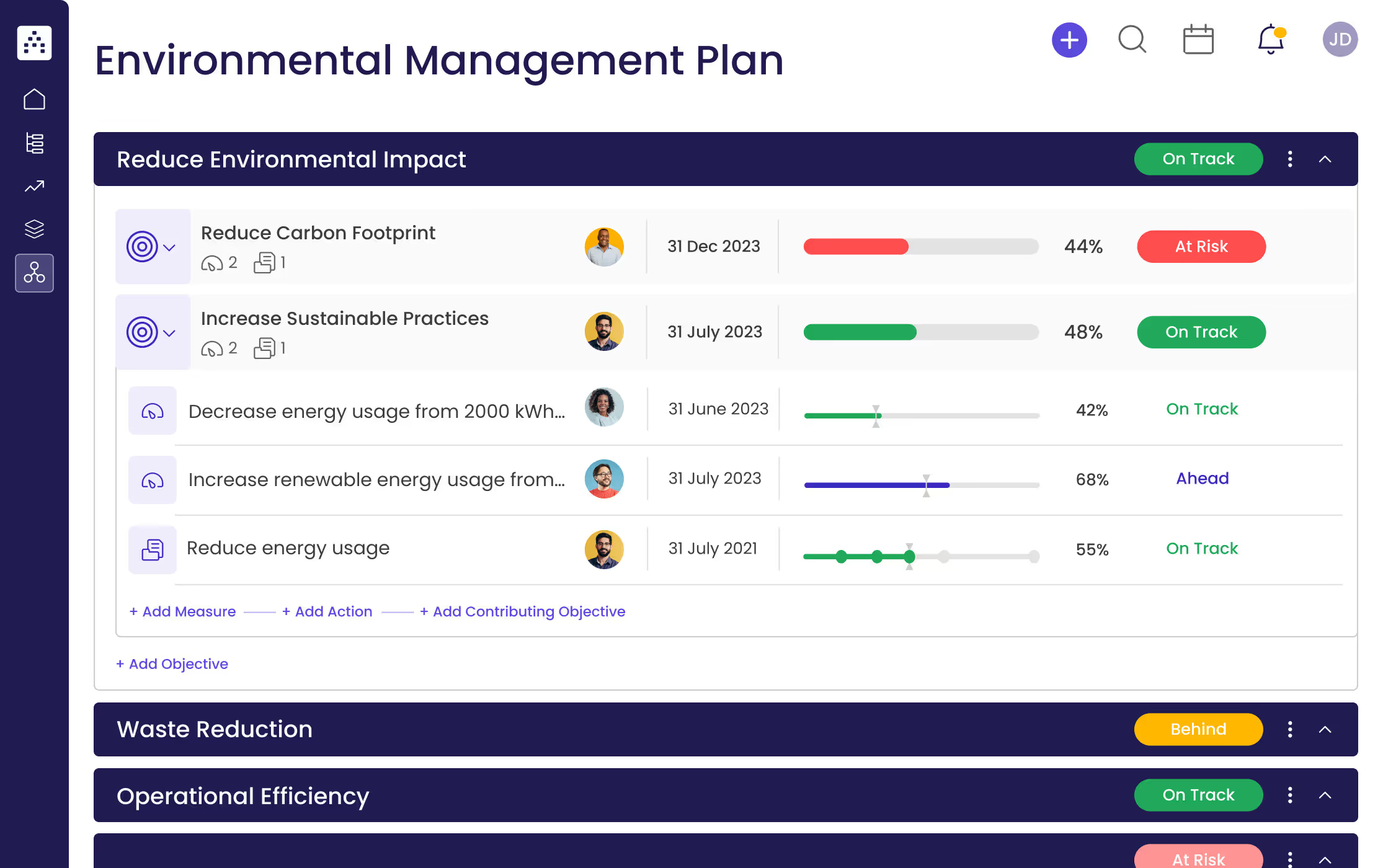What is a Environmental Management Plan?
An environmental management plan (EMP) outlines an organization's environmental initiatives and policies, and provides a framework to ensure that they are being implemented and maintained. It outlines goals and objectives, identifies environmental risks and impacts, and identifies measures to prevent and manage those risks and impacts. It also provides methods to track and monitor progress towards achieving environmental goals and objectives. An EMP can be used by any organization, business, or government to meet their environmental requirements and commitments.
What's included in this Environmental Management Plan template?
- 3 focus areas
- 6 objectives
- 6 projects
- 6 KPIs
Each focus area has its own objectives, projects, and KPIs to ensure that the strategy is comprehensive and effective.
Who is the Environmental Management Plan template for?
This Environmental Management Plan template is designed for sustainability and ESG teams in organizations of all sizes and industries, from small businesses to large corporations. It provides an easy-to-follow framework to help organizations create an effective plan to manage their environmental strategies and commitments, and is designed to help organizations save time and resources on creating their own plan from scratch.
1. Define clear examples of your focus areas
Focus areas are broad areas of sustainability that your organization is interested in improving. Examples include reducing environmental impact, waste reduction, and water conservation. These focus areas should be defined and clearly communicated to ensure that everyone in the organization understands their purpose and importance.
2. Think about the objectives that could fall under that focus area
Under each focus area, you should list objectives that your organization wants to achieve. Objectives should be specific, measurable, and achievable. Examples of objectives include reducing carbon footprint, increasing sustainable practices, and increasing recycling rates.
3. Set measurable targets (KPIs) to tackle the objective
For each objective, you should set measurable targets (KPIs) to track progress and ensure that you are achieving the desired results. These KPIs should include an initial value, a target value, and a unit of measurement (e.g. kWh, %, tons). Examples of KPIs include reducing energy usage from 2000 kWh to 1500 kWh, increasing renewable energy usage from 10% to 20%, and increasing recycling rate from 15% to 25%.
4. Implement related projects to achieve the KPIs
Projects (actions) should be implemented to achieve each KPI. Projects should be specific, measurable, and achievable. Examples of projects include reducing energy usage, increasing use of renewable energy, and increasing recycling of materials.
5. Utilize Cascade Strategy Execution Platform to see faster results from your strategy
The Cascade Strategy Execution Platform helps organizations easily create and manage their environmental management plans. Cascade provides an intuitive interface and powerful analytics to help you track and monitor your environmental goals and objectives, and provides a comprehensive view of your progress. With Cascade, you can achieve faster results from your environmental management plan.


